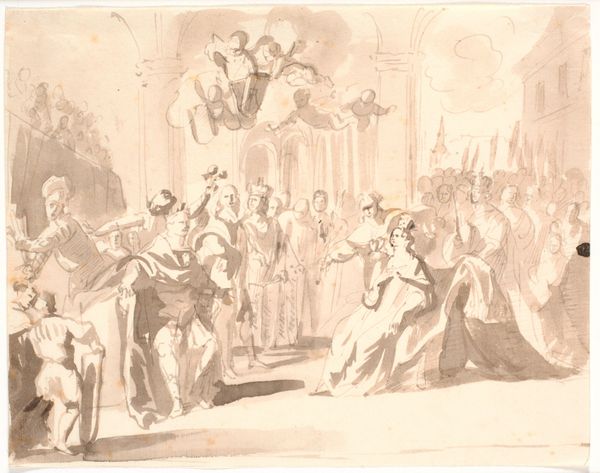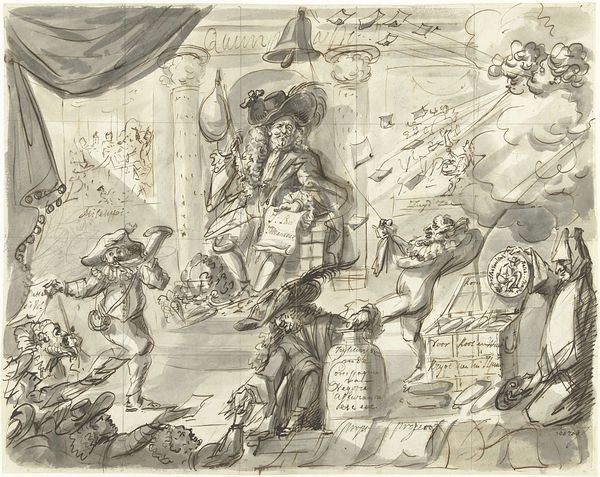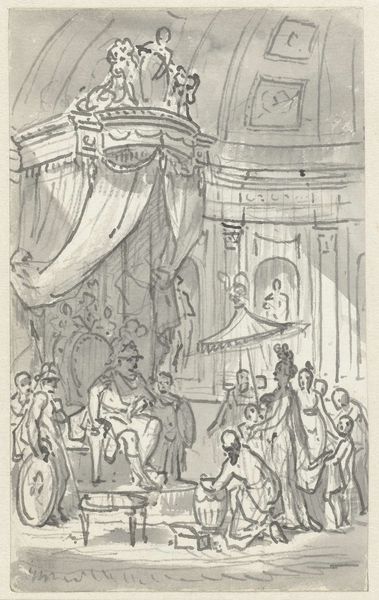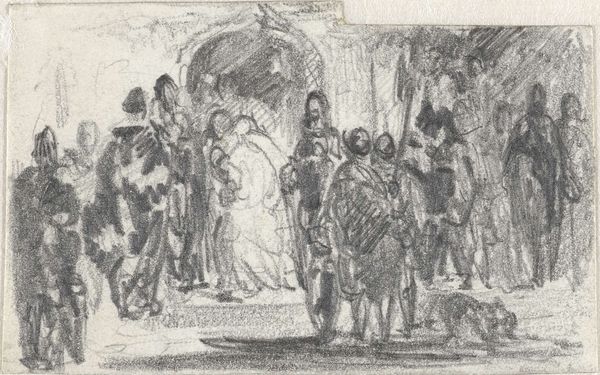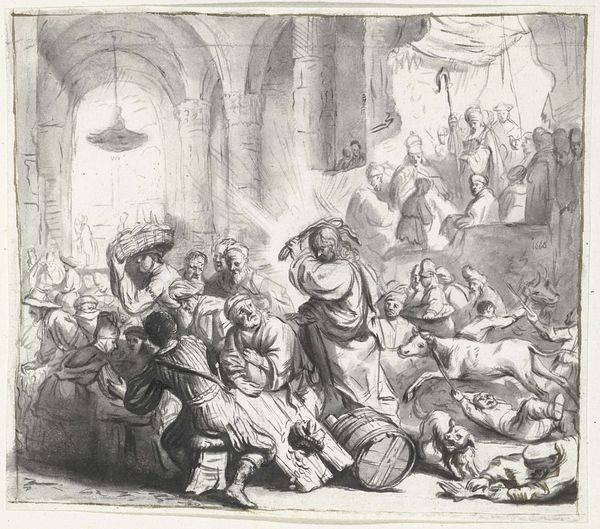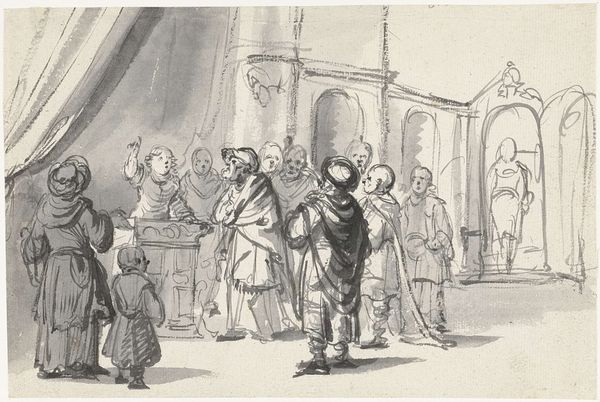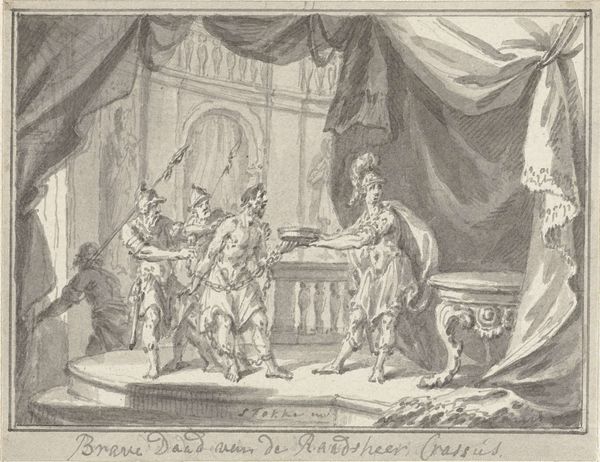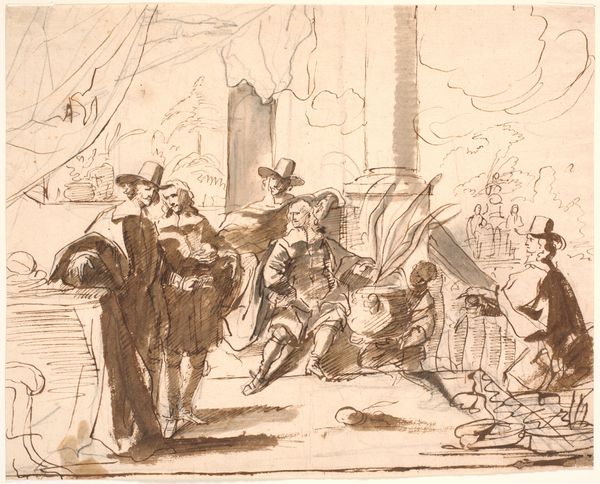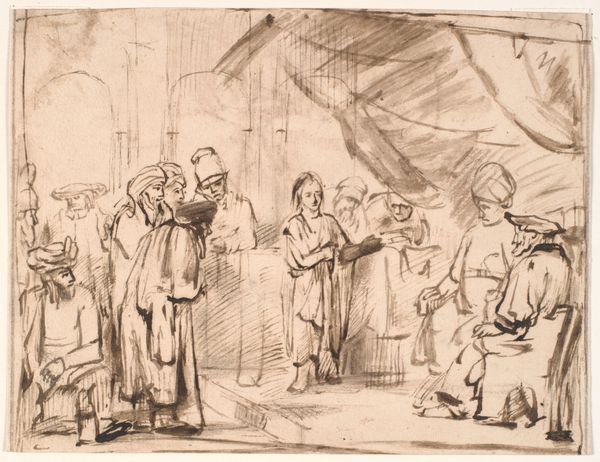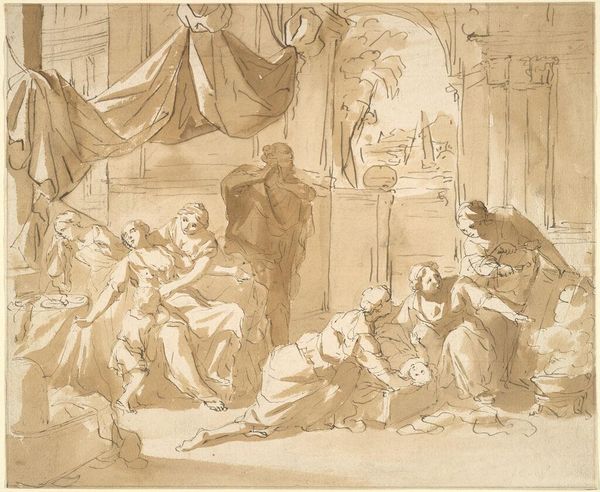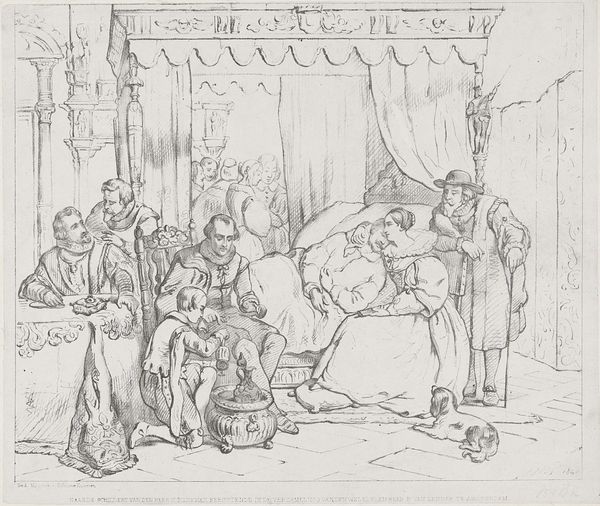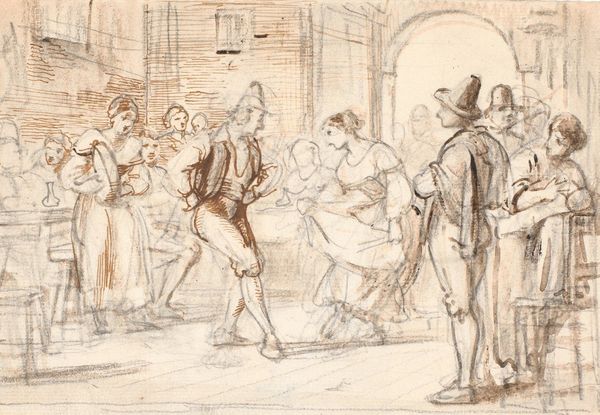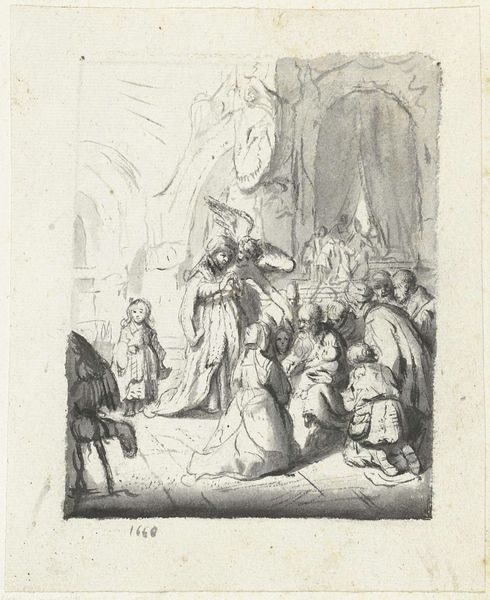
drawing, graphite
#
drawing
#
baroque
#
pencil sketch
#
figuration
#
graphite
#
genre-painting
#
history-painting
Dimensions: height 213 mm, width 328 mm
Copyright: Rijks Museum: Open Domain
Editor: This is Moses ter Borch’s “Judgment of Solomon,” a graphite and pencil sketch created after 1660, and housed in the Rijksmuseum. There's an incredible dramatic tension in the composition, heightened by the loose lines. What strikes you most about this work? Curator: The drama stems not just from the artist's hand, but also the story itself. "The Judgment of Solomon" was a popular subject that highlighted ideas of justice and legitimate rule, particularly important in the 17th century with its evolving political landscape. Note the figure kneeling before Solomon, her posture echoing powerlessness. Editor: So the story carries inherent weight? Does Ter Borch's treatment amplify that? Curator: Precisely. The sketchy quality isn't a weakness, but an asset. It creates a sense of immediacy, as though we are witnessing a real event unfolding. Think of the function of drawings during the Baroque period. Many artists, even in the 17th century, produced studies with "finish," sometimes functioning as independent artworks that were highly sought after and collected. This "finish" elevates a sketch and imbues a sense of importance to the owner of such an object. But does this finish exist here? What would happen if he had painted it? Editor: Maybe it would lose some of its raw emotional impact? If painted, the setting would be more tangible and perhaps less focused on the characters. The current state keeps the eye fixed on the human figures and their plight, giving that Baroque tension everything it needs. Curator: Exactly! It reminds us that art is as much about *who* gets to tell stories and *how* they choose to do so. A "simple" drawing such as this carries cultural and political potency that should never be underestimated. I agree, a high level of finish may very well diminish that raw sense of injustice, obscuring the story's power. Editor: It’s amazing how a sketch can contain so much narrative and cultural significance!
Comments
No comments
Be the first to comment and join the conversation on the ultimate creative platform.
